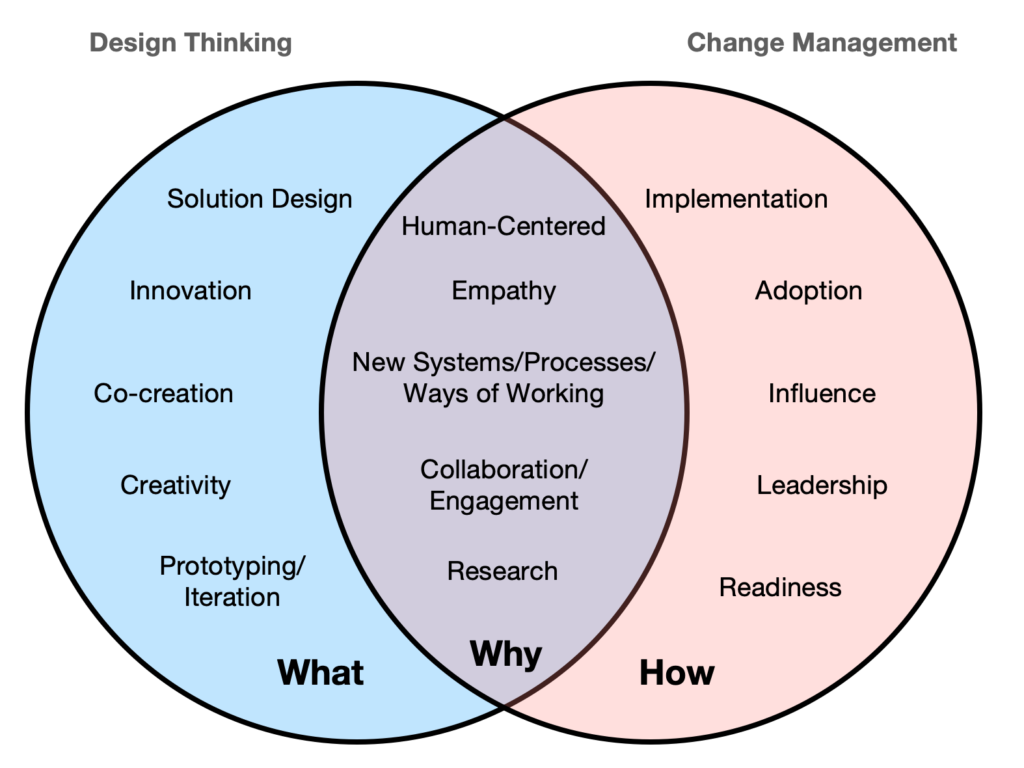I’ve recently partnered with DesignThinkers Group, USA to explore how the disciplines of Design Thinking and Change Management can expand the impact of both.
This Venn diagram highlights some of the similarities and differences between Design Thinking and Change Management. I’ll explore these at a high level below.

Design Thinking applies the principles of Human-Centered Design. Its focus is to develop innovative processes, systems, products, and services, in service of creating better human (customer, employee, etc.) experience. Design Thinking is used to come up with the solution of What to implement. Often missing from the Design Thinking process is implementation and adoption of the thing that was designed.
Change Management is also a human-centered activity. Change agents promote engagement and consider people’s experience to plan the implementation. Change Management is used to implement new processes, systems, products, and services. The focus of Change Management is How to implement the solution. Often missing from Change Management is engaging people in the design of the thing that will be implemented. Usually, by the time Change Managers are brought in, the project has already been decided.
You can see how well these two fields can fit together. Both fill in a gap left by the other. Design Thinking brings people into the development of what will be implemented, and Change Management enables something that has been designed to be adopted.
Solidifying the relationship between these two disciplines is what they already have in common. Besides being human-centered, both focus on delivering a new way of working. They start with Why change must happen, and conduct research to better understand people’s experience. And both promote collaboration and engagement as a way of getting things done.
There is also much that the fields of Design Thinking and Change Management can learn from each other. For example, Change Management can become even more human-centered and innovative by adopting Design Thinking principles. And Design Thinking can learn how to design with adoption in mind from the start.
I’m looking forward to this new collaboration. As I learn more myself, I’ll explore some of these concepts in greater detail in future articles.
Have you used Design Thinking principles in your change management work? Please share in the comments below.

 Adding Change Management to an Existing Project
Adding Change Management to an Existing Project